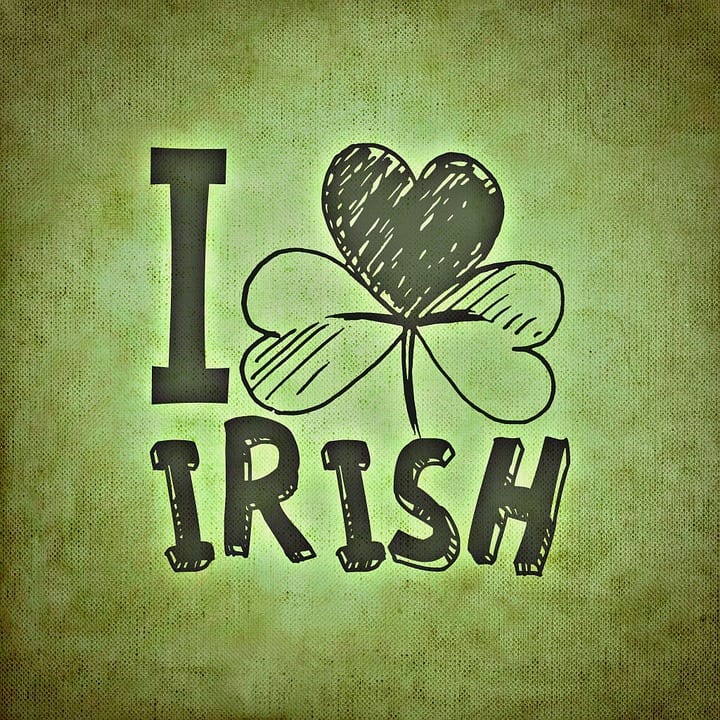March is when the retail stores break out all things green. You cannot go inside a store without finding a top hat, a leprechaun, a four-leaf clover and a pot of gold at the end of a rainbow. Although these are symbols that are typically associated with St. Patrick’s Day, there is much more to the holiday than sporting green to escape being pinched.
James Doan, professor in the Department of Literature and Modern Languages of the College of Arts, Humanities and Social Sciences, specializes in folklore and mythology. Doan said that symbols for St. Patrick’s Day in the U.S. are commercialized and fake.
“In the Irish culture, we would use the term ‘Plastic Patties’ to describe someone who decides when they want to be Irish,” he said. “People have this misconception that, to celebrate St. Patrick’s Day, you have to paint your face green and get drunk, but, to me, that isn’t Irish at all.”
With the influence of commercial products and movies that over-theatricalize Irish folklore, it is easy to see why many people, even some Irish-Americans, are unaware of the true meaning of St. Patrick’s Day.
David Kilroy, associate professor in the Department of History and Political Science of the College of Arts, Humanities and Social Sciences, said that St. Patrick’s Day is an Irish holiday that celebrates Ireland’s patron saint, St. Patrick.
“Ireland is predominately Catholic, but the Protestants in Ireland celebrate St. Patrick’s Day as well because both religious traditions trace their origins back to St. Patrick,” Kilroy said.
Kilroy said that Celtic Irish people brought St. Patrick, who was actually a slave, to Ireland from Roman Britain in the fifth century. While he was there, he prayed and eventually escaped back to Britain, where he had a dream that he was communicating with God.
According to Kilroy, the story of St. Patrick is that God told him that he must go back to Ireland and convert the Irish to Christianity. St. Patrick returned to Ireland and succeeded in converting the Irish, which is why he is considered the founder of Irish Christianity.
Doan said, when he lived in Ireland more than 30 years ago, people celebrated the holiday by going to Mass, or the Catholic time of worship.
“Pubs were not even open, or, if they were, it was only in the evening for a couple of hours,” he said. “People just enjoyed having dinner with their families — we just spent time together like any other religious holiday, such as Easter or Christmas.”
According to Kilroy, when the Irish came to the U.S. in the 1840s, they faced a lot of hostility. During that time, there were a lot of anti-immigrant sentiments and prejudice against the Irish people, especially because they were Catholic in an overwhelmingly Protestant country.
“When the Irish came to America, they were seen as racially inferior by the Anglo-Saxon population, and, on top of that, they were mostly poor and illiterate,” Kilroy said. “So there was a significant amount of nativism and opposition for the Irish people, which lead St. Patrick’s Day to becoming this symbol of their pride in their identity.”
Kilroy said Irish pride was where the idea of green and promotion of Irish folklore came in; the Irish would march in parades as a statement of pride and, ultimately, to show that prejudice did not intimidate them.
Those who anticipate the annual St. Patrick’s Day parades probably do not know that these parades originated in New York and Philadelphia and were used as a statement of pride against oppression.
“The parades and wearing green originated in the U.S., but that is because of the presence of the Irish in the U.S.,” said Kilroy “The low-key nature of St. Patrick’s Day that I experienced as a child was because I lived in Ireland, but, in America, St. Patrick’s took on a different meaning.”
Doan said that the common St. Patrick’s Day traditions in the U.S. don’t constitute the meaning for the holiday as a whole.
“In many ways, the commercialization that characterizes the American culture tends to distract from the original meaning behind holidays such as St. Patrick’s Day because it’s too inflated,” he said. “Yes, shamrocks and wearing green are apart of the holiday, but that is just a part of it — that’s definitely not the whole thing.”
In the month of March, the world celebrates St. Patrick’s Day. But, in all its green glory, this holiday serves a religious and historical purpose. To learn more about Irish history and the background of St. Patrick’s Day, visit stpatricksday.com.
Photo credit: pixabay.com


